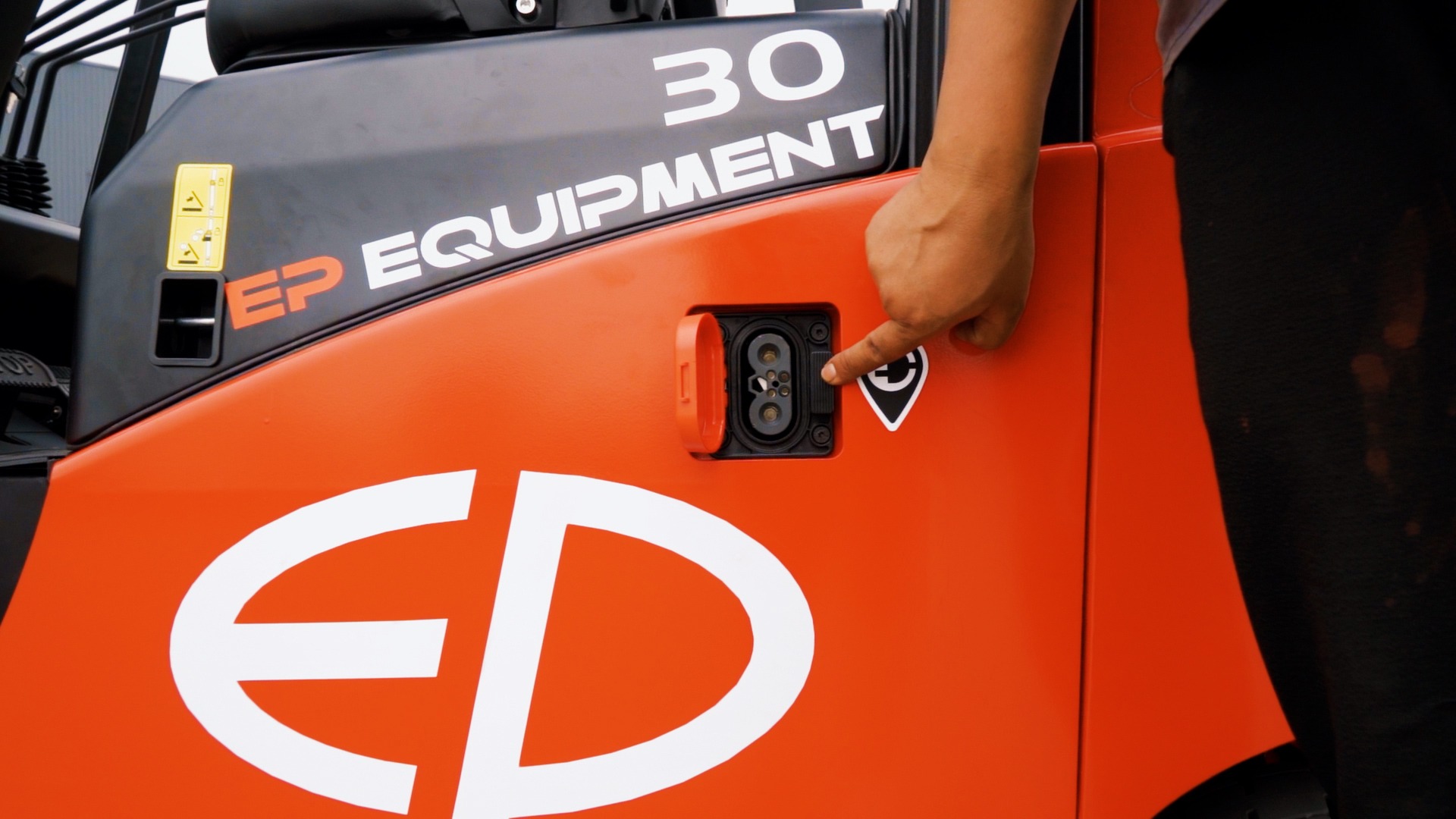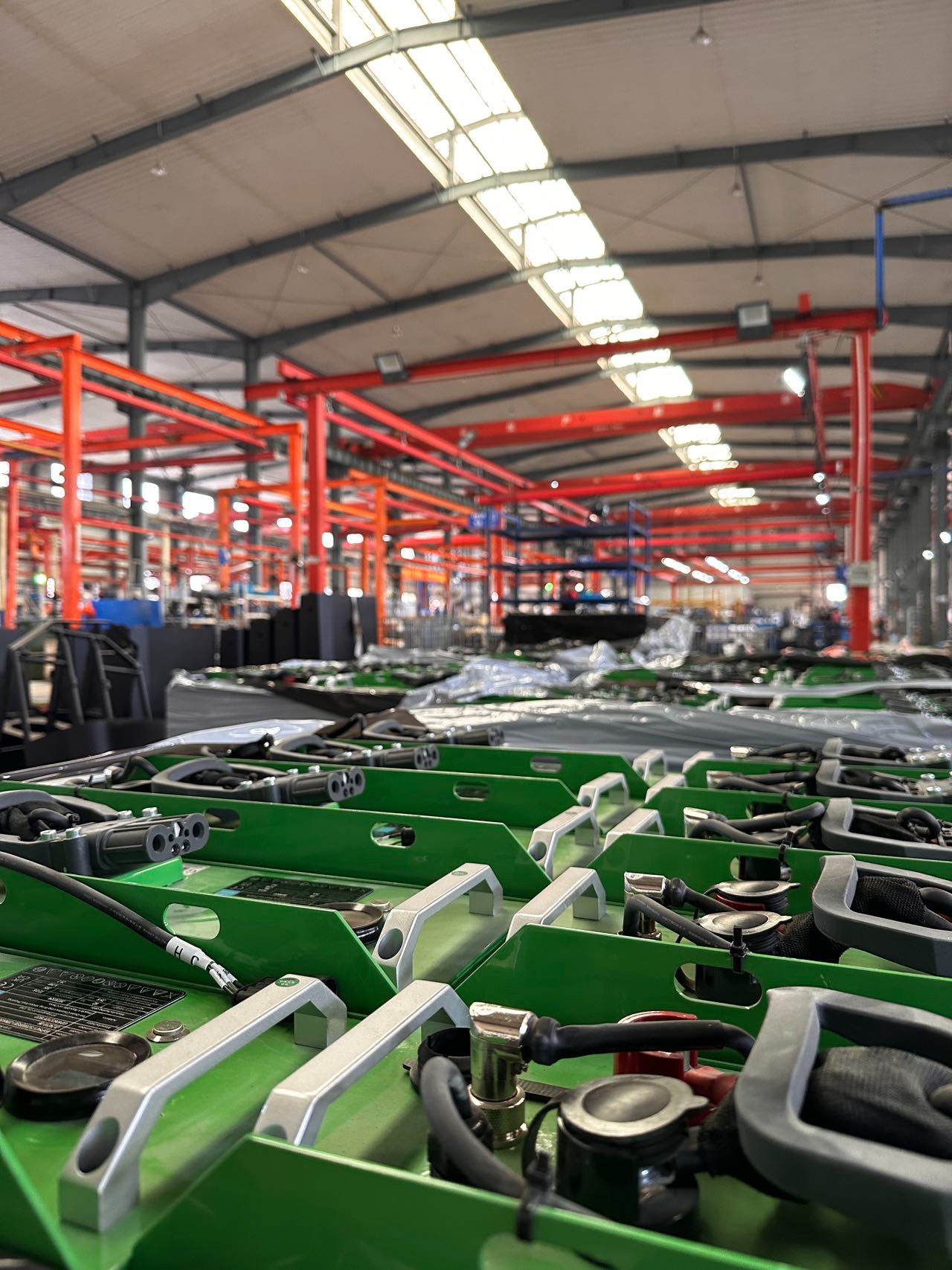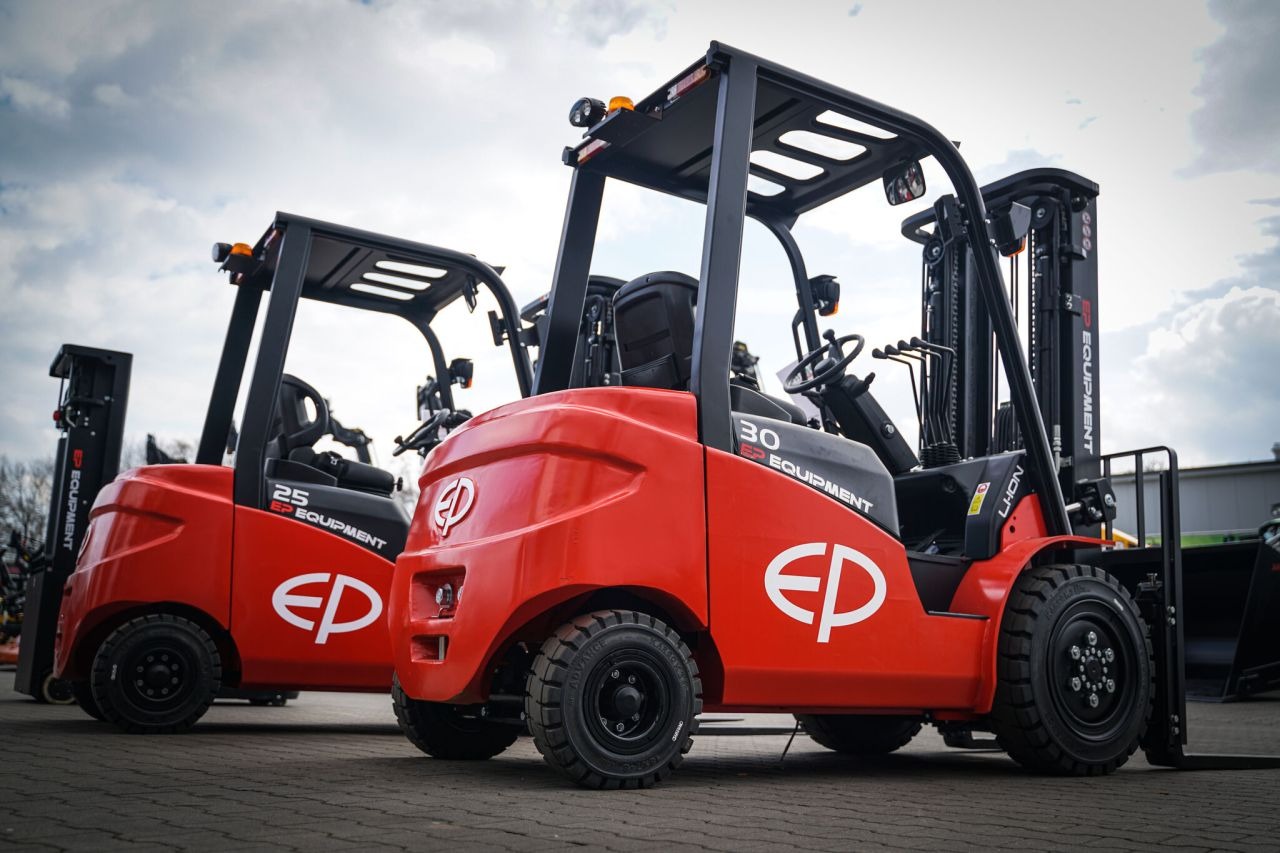Nowadays, businesses strive to reduce their environmental impact and reducing CO2 emissions plays an important role in this effort. One area where businesses can make a significant difference is in the equipment they use.
In this article, we will compare the CO2 emissions from a 2.5t lithium forklift with a 10-20 kWh battery to those of a 2.5t diesel forklift. It is important to understand first what CO2 emissions are, why these are harmful for the environment and why lithium-ion equipment is the right choice for a greener future.
What are CO2 emissions, and why are they important in the Material Handling Industry?
Carbon dioxide emissions refers to the release of carbon dioxide gas into the atmosphere. Carbon dioxide is a colourless, odourless gas composed of one carbon atom bonded to two oxygen atoms (CO2).
CO2 emissions can result from:
- Natural processes: such as volcanic activity, decomposition and respiration, ocean release, wildfires, and geologic processes.
- Human activities: such as fossil fuel combustion, industrial processes, waste management, deforestation, and land use changes.
While natural processes do contribute to CO2 emissions, they are part of a balanced carbon cycle that has been in place for millions of years. However, CO2 emissions largely result from the burning of fossil fuels. When these are burned, the carbon stored within them combines with oxygen from the air, producing carbon dioxide as a byproduct.
Human activities, especially the burning of fossil fuels for energy, have significantly increased the concentration of CO2 in the Earth’s atmosphere since the Industrial Revolution. CO2 is a greenhouse gas, meaning it has the ability to trap heat from the sun within the Earth’s atmosphere. This trapping of heat leads to the greenhouse effect, which is responsible for maintaining the Earth’s temperature and making it habitable.
When considering emissions from industrial equipment, people are often faced with the choice of Electric vs IC engine forklifts.
What is an IC Forklift?
An IC engine Forklift is a type of forklift that uses internal combustion (IC) engine to power its operation. It can be powered by gasoline, diesel, propane or natural gas.

What is an Electric Forklift?
An Electric Forklift is a forklift that uses an electric motor powered by an onboard battery. The battery provides power to the electric motor, which drives the wheels and the hydraulic system that lifts and lowers the load.
There are different types of batteries used in electric forklifts:
Lead-acid
Lead-acid batteries are the more traditional type of battery, however they have some limitations, such as being heavy, requiring regular maintenance, and having a slow charging time.
Lithium-ion
Lithium-ion batteries are a newer type of battery that is becoming increasingly popular. Compared to lead-acid, they are lighter, have a faster charging time and maintenance free.
Diesel forklift VS Lithium Forklift: CO2 Emissions
Now let’s take a closer look at the CO2 emissions of diesel and lithium forklifts.
IC Forklift Trucks:
Diesel forklifts are commonly used in industrial settings because they are often associated with their ability to lift heavy loads. However, diesel engines produce a significant amount of CO2 emissions both during the production of diesel fuel to power the engine, and during the internal combustion.
The process of transferring diesel to the tank for use is known as the well-to-tank process. Emissions for diesel production are about 500-600 grams of CO2-equivalent per litre. A 2.5t diesel forklift consumes roughly 2-3 liters per hour, resulting in 1,000-1,800 grams of well-to-tank CO2 emissions per hour.
When burning the diesel, it emits approximately 2,640 grams of CO2 per litre, leading to 5,280-7,920 grams of CO2 emissions per hour from combustion.
Lithium-ion Trucks:
The production of a lithium-ion battery for a 2.5t forklift generates a 300-600 kg of CO2 emissions, this is a one-time emission, and the battery has a long lifespan.
This means that while the initial production of the battery has a higher carbon footprint than the diesel forklift, over its lifetime, the lithium forklift produces fewer emissions.
To compare fairly, we must also consider the CO2 emissions from electricity consumption during the lithium forklift’s operation. Today, the European average CO2 intensity of the electricity mix is approximately 275 grams per kWh[GB1] . Assuming a 2.5 t lithium forklift consumes 5 kWh per hour, it results in 1,375 grams of CO2 emissions per hour.
When we compare the operational CO2 emissions, it becomes evident that the lithium forklift has significantly lower emissions than its diesel counterpart. While the diesel forklift emits 5,280-7,920 grams of CO2 per hour from combustion alone, the lithium forklift produces only 1,375 grams of CO2 emissions per hour, considering both the battery production and electricity consumption.
Advantages of Lithium-ion Material Handling Equipment
As we have seen, choosing a lithium-ion forklift will surely represent an advantage for the environment as its CO2 emissions are lower than those of a diesel forklift. But this is not all: lithium forklifts offer many other advantages over diesel forklifts. Here’s some key points:

Improved safety
Compared to diesel forklifts, lithium forklifts are safer as they eliminate the risk of fuel leakage and the potential hazards associated with storing and handling flammable fuel. Furthermore, EP Equipment’s Lithium-ion batteries are produced with LFP technology which, compared to NMC, offers a lower possibility of inflammation and explosion when punctures or overheated.
Noise reduction
Diesel forklifts can be quite noisy during operation, which can be disruptive in indoor environments or noise-sensitive areas. In contrast, lithium forklifts are typically quieter and produce less noise pollution. This advantage can lead to a more comfortable and productive work environment.
Operational efficiency
Lithium forklifts often have faster acceleration and smoother handling compared to diesel forklifts. They provide consistent power delivery throughout their operating cycle, resulting in improved efficiency and productivity. Additionally, lithium-ion batteries can be recharged more quickly than refuelling diesel tanks, reducing downtime and optimizing workflow.
Lower operating costs
Although the initial purchase cost of lithium forklifts may be higher than that of diesel forklifts, they can offer long-term cost savings. Lithium-ion batteries have longer lifespans compared to internal combustion engines, reducing the need for frequent replacements or major maintenance. Moreover, electricity is often less expensive than diesel fuel, leading to lower operating costs over time.
How to choose the right lithium-ion equipment for your application
Here at EP, we know every customer is different and has different needs. We strive to offer the right truck for every application and offer a wide range of electric counterbalance trucks.
EP produces different types of electric forklifts:
3-wheel electric
Powerful, indoor, and outdoor, inclinations, shortest turning circle. These include:
For the indoor application in narrow space, the small rear-wheel drive 3-wheel forklift trucks are the truck of choice. The most compact electric forklifts for sale have a working aisle of under 3m.
4-wheel electric
Powerful, mostly outdoor, these include:
For forklifts in outdoor applications, on uneven surfaces or for heavy loads, the 4-wheel forklift truck is preferred.
Stability of forklifts when lifting is not so much the issue, both 3-wheel trucks and 4-wheel trucks have the same stability. 4-wheel trucks are just more capable in tougher handling conditions when loading and unloading lorries or when working on uneven roads.
If you have any other questions when it comes to selecting the right forklift for your business, feel free to contact EP, we will assist you find the perfect equipment to enhance your business efficiency.

